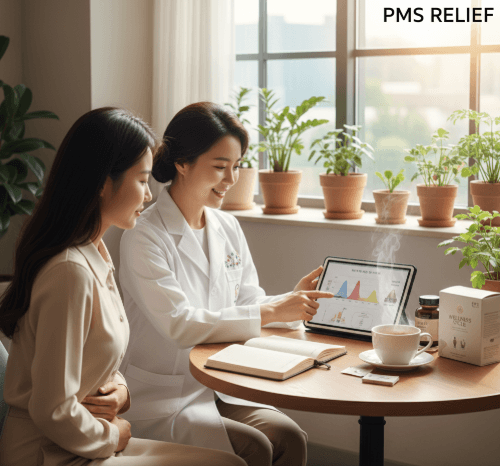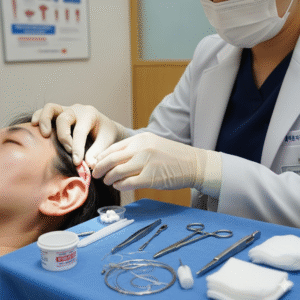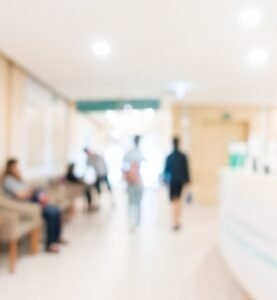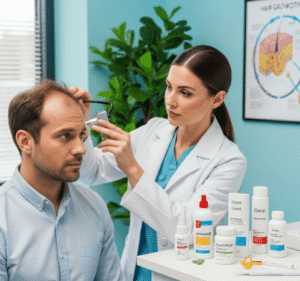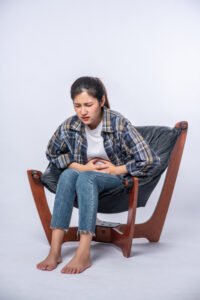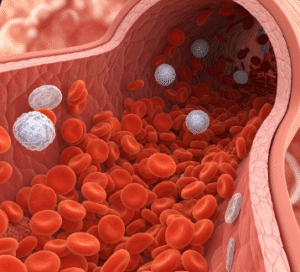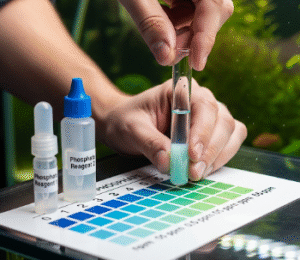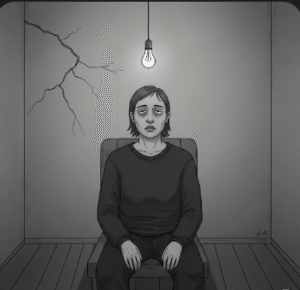What it is
Premenstrual Syndrome (PMS) is a group of emotional, physical, and behavioral symptoms that occur in the luteal phase of the menstrual cycle (the days before a period starts). Symptoms usually resolve once menstruation begins.
✔️ Common symptoms: Mood swings, irritability, anxiety, bloating, breast tenderness, headaches, and food cravings.
✔️ Severe cases: Some women may experience Premenstrual Dysphoric Disorder (PMDD), a more intense form of PMS that significantly affects daily life.
✔️ Prevalence: Most women experience mild PMS at some point, but around 20–30% have moderate to severe symptoms that require treatment.
➡️ In Korea, PMS treatment is available at gynecology clinics, women’s health centers, and integrative medicine clinics.
Why it’s done
Treatment for PMS is important because it:
🔹 Relieves physical discomfort (pain, bloating, fatigue).
🔹 Supports emotional stability by managing mood swings, anxiety, and irritability.
🔹 Improves productivity at school or work by reducing symptom interference.
🔹 Helps identify PMDD, which requires specialized care.
🔹 Supports reproductive health, since PMS can worsen with hormonal imbalances or underlying conditions.
💡 Highlight: Treating PMS goes beyond comfort—it helps women maintain emotional balance, physical well-being, and daily productivity.
Alternatives
Women in Korea have multiple options to manage PMS beyond medical therapy:
➡️ Lifestyle modifications – regular exercise, stress management, balanced diet.
➡️ Nutritional supplements – calcium, magnesium, vitamin B6, and omega-3s.
➡️ Herbal and Korean traditional medicine – red ginseng, acupuncture, and herbal teas are commonly used.
➡️ Self-care techniques – yoga, meditation, and sleep hygiene.
➡️ Cycle tracking apps – help predict and prepare for PMS symptoms.
⚠️ Note: Alternatives are helpful for mild PMS, but severe PMS or PMDD often require medical intervention.
Preparation
Before seeking PMS treatment in Korea, preparation includes:
✔️ Symptom diary – record severity, timing, and type of symptoms over 2–3 cycles.
✔️ Lifestyle review – diet, sleep, stress, alcohol, and caffeine intake.
✔️ Medical history – including depression, anxiety, thyroid disorders, or hormonal issues.
✔️ Fertility goals – important for choosing hormonal vs. non-hormonal treatments.
✔️ Emotional health check – since PMS can overlap with mood disorders.
💡 Tip: Korean gynecologists encourage patients to bring cycle-tracking data or symptom logs, which help in distinguishing PMS from other conditions.
How it’s done
Treatment of PMS in Korea usually involves a multi-approach strategy:
- Lifestyle and dietary changes
- Regular aerobic exercise.
- Limiting salt, caffeine, and alcohol.
- Eating more fruits, vegetables, and whole grains.
- Medications
- NSAIDs (ibuprofen, naproxen) for pain and cramps.
- Hormonal treatments (birth control pills, IUDs, injections) to regulate cycles and reduce PMS symptoms.
- Antidepressants (SSRIs) for severe PMS or PMDD.
- Anti-anxiety medications when mood symptoms are overwhelming.
- Nutritional and herbal supplements
- Vitamin B6, magnesium, and calcium.
- Herbal remedies such as evening primrose oil or ginseng.
- Traditional Korean medicine
- Acupuncture to improve hormonal balance and reduce stress.
- Herbal therapies prescribed based on cycle phase and body constitution.
- Counseling and stress management
- Cognitive-behavioral therapy (CBT).
- Relaxation techniques and guided meditation.
💡 Highlight: Korean clinics are known for integrating Western medicine and traditional therapies, offering women more comprehensive treatment choices.
Recovery
PMS management focuses on symptom control rather than permanent cure, so recovery means reduced severity and improved quality of life.
✔️ Medication relief – noticeable within 1–2 cycles.
✔️ Lifestyle and diet changes – gradual improvement over a few months.
✔️ SSRIs or hormonal therapy – often effective within the first cycle of use.
✔️ Acupuncture and herbal medicine – typically show benefits after consistent sessions.
When to revisit a doctor:
➡️ If PMS symptoms suddenly worsen.
➡️ If symptoms interfere with daily life despite treatment.
➡️ If emotional symptoms suggest PMDD.
💡 Important: Korean clinics emphasize regular follow-ups to tailor treatments as symptoms may change over time.
Treatment option in Korea
Korea provides excellent care for PMS treatment through:
⭐ Women’s health clinics with specialists in gynecology and endocrinology.
⭐ University hospitals for complex PMS and PMDD cases.
⭐ Integration of traditional Korean medicine like acupuncture with modern care.
⭐ Affordable consultation and treatment options compared to many Western countries.
⭐ Multilingual medical support in major hospitals for international patients.
💡 Highlight: Korean healthcare focuses on personalized, holistic, and affordable PMS care, ensuring women receive effective treatment for both body and mind.
Key Highlights
✔️ PMS is a group of physical and emotional symptoms before menstruation.
✔️ Treatment options include lifestyle changes, medications, supplements, and traditional Korean medicine.
✔️ Preparation involves symptom tracking and health history review.
✔️ Recovery is ongoing, with relief achieved through consistent care.
✔️ Korean clinics offer integrative and patient-focused treatment.

